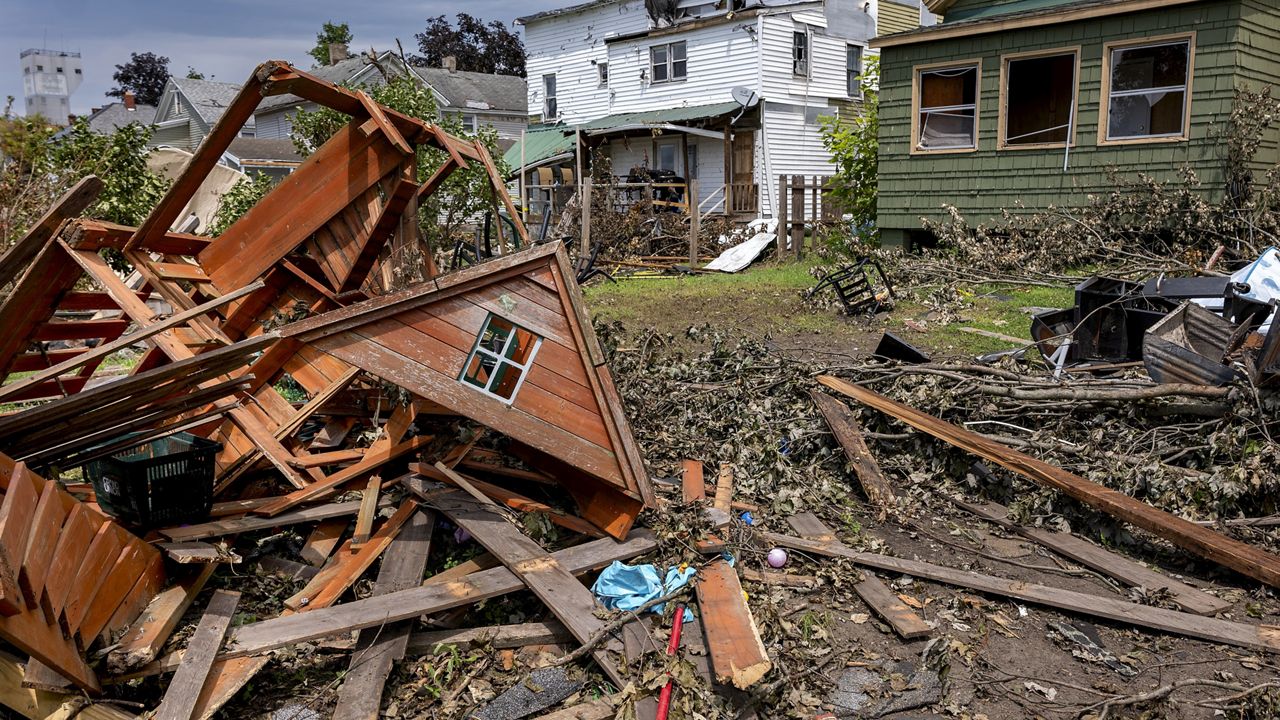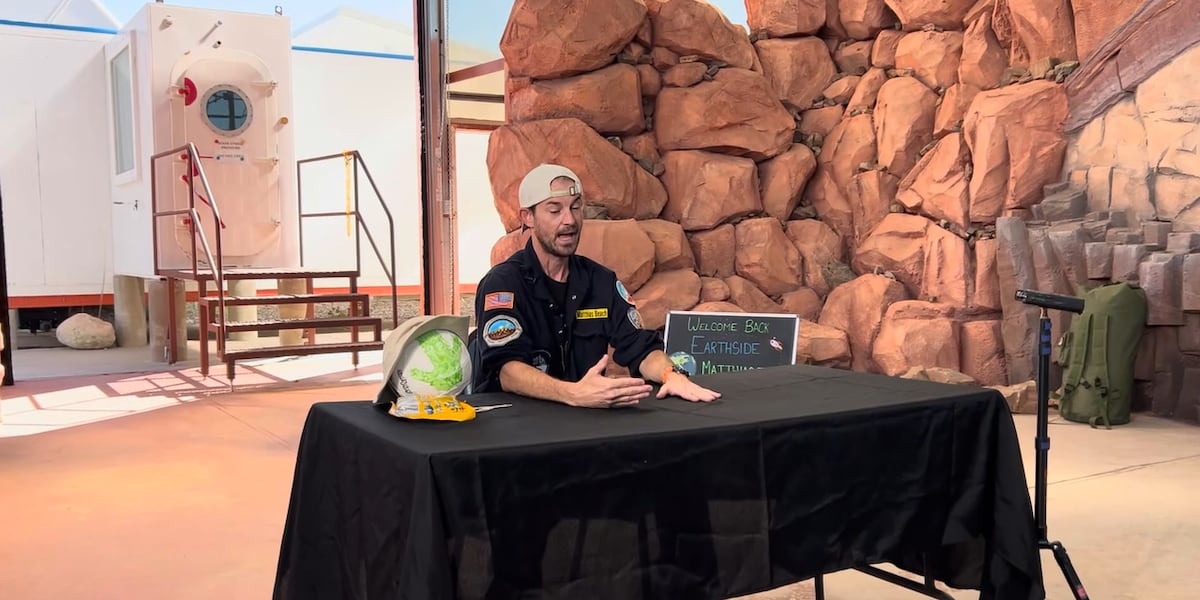Melting glaciers in Turkey signal severe climate crisis – Ynetnews

Report on Glacial Retreat in Turkey and its Implications for Sustainable Development Goals
Introduction: Climate Change and its Manifestations
Accelerated glacial melt, driven by rising global temperatures from fossil fuel consumption, presents a critical challenge to global sustainability efforts. This report examines the case of Turkey’s Cilo Mountain, where the rapid disappearance of glaciers serves as a stark indicator of the far-reaching impacts of climate change, directly threatening the achievement of multiple Sustainable Development Goals (SDGs).
Analysis of Environmental Degradation and SDG Impacts
SDG 13: Climate Action – The Core Challenge
The situation at Cilo Mountain is a direct consequence of inadequate global progress on SDG 13 (Climate Action). The once glacier-capped peaks are now largely barren, a visible outcome of anthropogenic climate change.
- Eyewitness accounts from mountain guides with over a decade of experience confirm the dramatic retreat of glaciers, which have been replaced by rock and grass.
- Scientific research corroborates these observations. Dr. Onur Satir of Yuzuncu Yil University reports a loss of nearly 50% of the region’s continuous snow and ice cover over the last 40 years.
- Turkey is experiencing national-level climate impacts, including severe heatwaves and a record-breaking temperature of 50.5°C recorded in Silopi.
SDG 6 & SDG 15: Threats to Water Security and Terrestrial Ecosystems
The melting of Cilo’s glaciers has profound implications for SDG 6 (Clean Water and Sanitation) and SDG 15 (Life on Land).
- Water Scarcity: The United Nations has warned that the disappearance of glaciers, which act as natural freshwater reservoirs, threatens the water supply for millions of people, undermining progress on SDG 6.
- Desertification and Ecosystem Loss: A UN report on global desertification highlights the extreme vulnerability of the region. Key projections that impact SDG 15 include:
- An estimated 88% of Turkey’s land is at risk of desertification.
- Precipitation is projected to drop by 30% by the end of the century.
- Temperatures are expected to rise by 5-6°C compared to the 1961-1990 average.
SDG 8 & SDG 12: The Challenge of Sustainable Economic Growth and Tourism
Recent regional developments, including the disarmament of the Kurdistan Workers’ Party (PKK), present opportunities for economic growth through tourism, a key aspect of SDG 8 (Decent Work and Economic Growth). However, current trends are misaligned with sustainable practices, challenging SDG 12 (Responsible Consumption and Production).
- A new road has increased vehicle and tourist traffic to the fragile mountain environment, which is cited as a factor accelerating the glacial melt.
- The melting ice has created significant safety hazards, including fatal glacier collapses, posing risks to the very tourism industry the region hopes to develop.
- This demonstrates a conflict between short-term economic activity and the long-term environmental preservation required for sustainable development.
Conclusion
The rapid degradation of the glacial environment on Cilo Mountain is a microcosm of a global crisis with severe consequences for the 2030 Agenda for Sustainable Development. The interconnected impacts on climate stability (SDG 13), water resources (SDG 6), biodiversity (SDG 15), and sustainable economic models (SDG 8, SDG 12) demand an urgent and integrated policy response. Failure to address the root causes of climate change will continue to undermine human well-being, environmental stability, and the prospect of a sustainable future for the region and the world.
1. Which SDGs are addressed or connected to the issues highlighted in the article?
SDG 13: Climate Action
- The article’s central theme is the impact of climate change, specifically mentioning “rising global temperatures, driven by the use of fossil fuels,” which directly aligns with the goal of taking urgent action to combat climate change and its impacts.
SDG 15: Life on Land
- The article details the degradation of a specific terrestrial ecosystem, Cilo Mountain. It describes the loss of glaciers, leaving “barren peaks,” and mentions a UN report estimating that “88% of Turkey’s land is at risk” of desertification. This connects to the goal of protecting, restoring, and promoting the sustainable use of terrestrial ecosystems.
SDG 6: Clean Water and Sanitation
- The melting of glaciers is explicitly linked to water resources. The article states that the United Nations warns the loss of glaciers is “threatening water supplies for millions,” which relates to the goal of ensuring the availability and sustainable management of water.
SDG 11: Sustainable Cities and Communities
- The article touches upon the impact of human activity and infrastructure on the environment. It notes that a “new road… has increased vehicle and tourist traffic, further accelerating the melt,” highlighting the need for sustainable planning in human settlements and infrastructure development to mitigate environmental damage.
2. What specific targets under those SDGs can be identified based on the article’s content?
SDG 13: Climate Action
- Target 13.1: Strengthen resilience and adaptive capacity to climate-related hazards and natural disasters in all countries.
- The article highlights climate-related hazards such as “heatwaves,” a record-breaking temperature of “50.5°C,” and a fatal “glacier collapse” where two climbers died, demonstrating the real-world impacts that require strengthened resilience.
SDG 15: Life on Land
- Target 15.3: By 2030, combat desertification, restore degraded land and soil, including land affected by desertification, drought and floods, and strive to achieve a land degradation-neutral world.
- This target is directly addressed by the UN report cited in the article, which “estimated 88% of Turkey’s land is at risk” of desertification and that the country is grappling with “drought.”
- Target 15.4: By 2030, ensure the conservation of mountain ecosystems, including their biodiversity, in order to enhance their capacity to provide benefits that are essential for sustainable development.
- The focus on Cilo Mountain, its retreating glaciers, and the transformation of its peaks from ice-capped to “barren” is a clear example of a mountain ecosystem under threat, directly relating to this conservation target.
SDG 6: Clean Water and Sanitation
- Target 6.6: By 2020, protect and restore water-related ecosystems, including mountains, forests, wetlands, rivers, aquifers and lakes.
- Glaciers are a critical component of mountain water-related ecosystems. The article’s main subject, the rapid melting and loss of these glaciers (“we lost almost 50 percent of this continuous snow and ice cover”), points to the failure to protect this vital ecosystem.
3. Are there any indicators mentioned or implied in the article that can be used to measure progress towards the identified targets?
Indicators for SDG 13 (Climate Action)
- Temperature Change: The article provides specific data points, such as the prediction of a “temperature rise of 5-6°C (9-11°F) compared to 1961-1990 averages” and a recorded high of “50.5°C (122.9°F).” These are direct indicators of climate change.
- Human Impact of Disasters: The death of “two climbers… in a glacier collapse” serves as an indicator for Target 13.1, which measures the human cost of climate-related disasters.
Indicators for SDG 15 (Life on Land)
- Proportion of Degraded Land: The statistic that “88% of Turkey’s land is at risk” of desertification is a direct indicator related to Target 15.3.
- Change in Ice/Snow Cover: The research finding that “in the last 40 years, we lost almost 50 percent of this continuous snow and ice cover” is a quantifiable indicator of the degradation of the Cilo Mountain ecosystem, relevant to Target 15.4.
- Change in Precipitation: The prediction of a “30% drop in precipitation by century’s end” is an indicator of increasing drought and desertification risk.
Indicators for SDG 6 (Clean Water and Sanitation)
- Change in Water-Related Ecosystems: The loss of “50 percent” of the ice and snow cover is a direct measure of the degradation of a water-related ecosystem (glaciers), which serves as a primary source of freshwater. This is a key indicator for Target 6.6.
4. Table of SDGs, Targets, and Indicators
| SDGs | Targets | Indicators Identified in the Article |
|---|---|---|
| SDG 13: Climate Action | 13.1: Strengthen resilience and adaptive capacity to climate-related hazards and natural disasters. |
|
| SDG 15: Life on Land | 15.3: Combat desertification, restore degraded land and soil. |
|
| SDG 15: Life on Land | 15.4: Ensure the conservation of mountain ecosystems. |
|
| SDG 6: Clean Water and Sanitation | 6.6: Protect and restore water-related ecosystems, including mountains. |
|
Source: ynetnews.com

What is Your Reaction?
 Like
0
Like
0
 Dislike
0
Dislike
0
 Love
0
Love
0
 Funny
0
Funny
0
 Angry
0
Angry
0
 Sad
0
Sad
0
 Wow
0
Wow
0

















































































